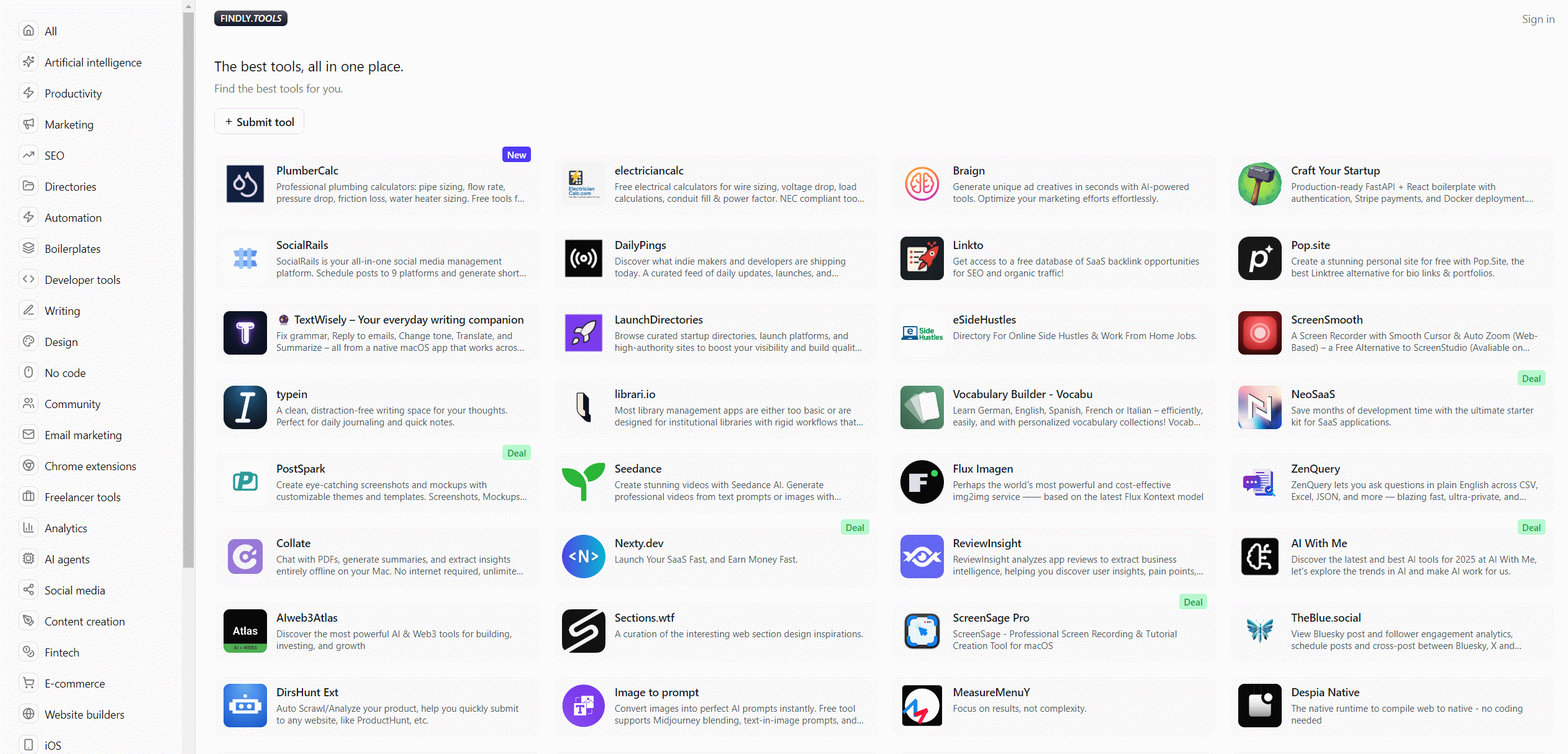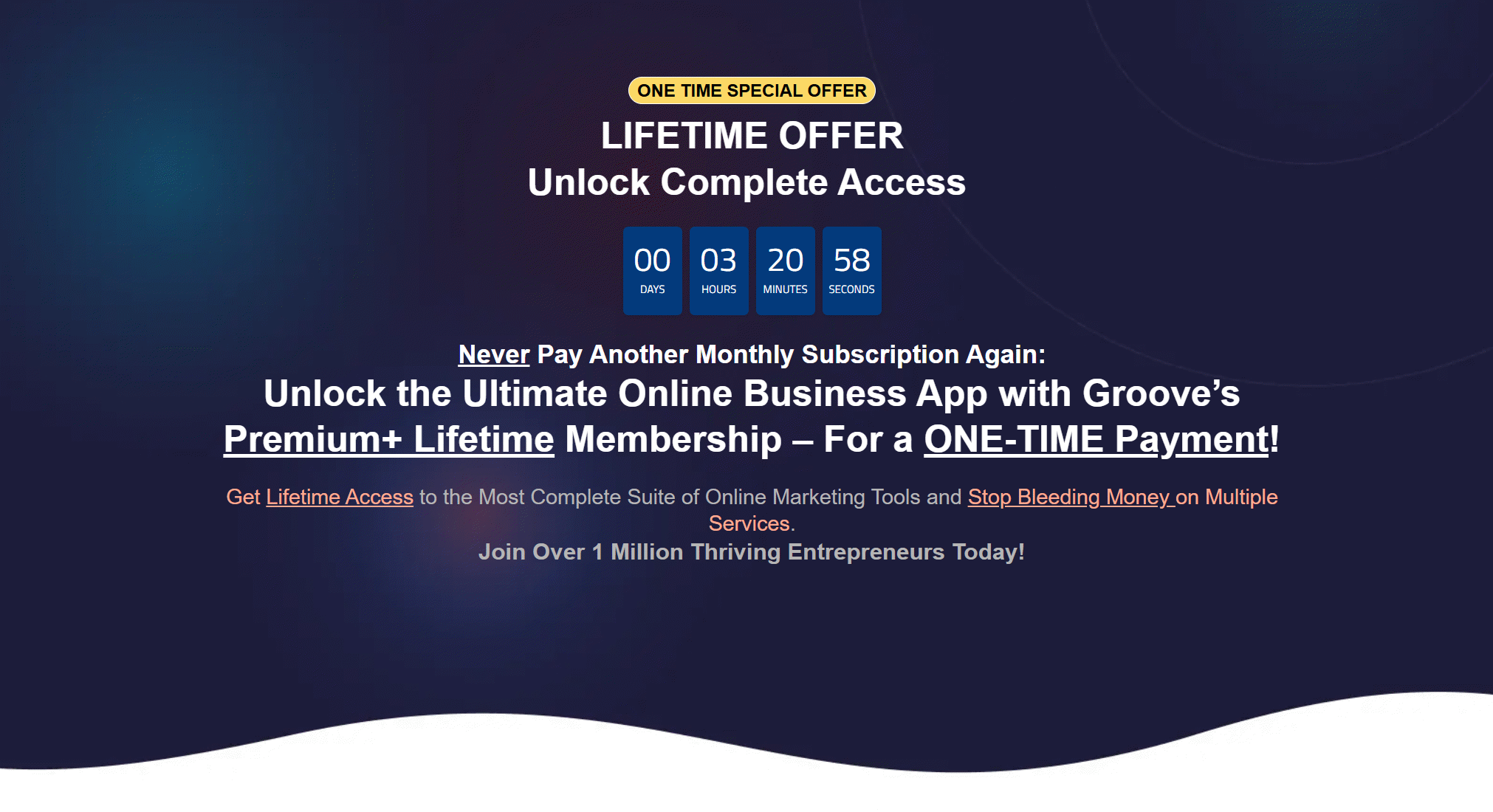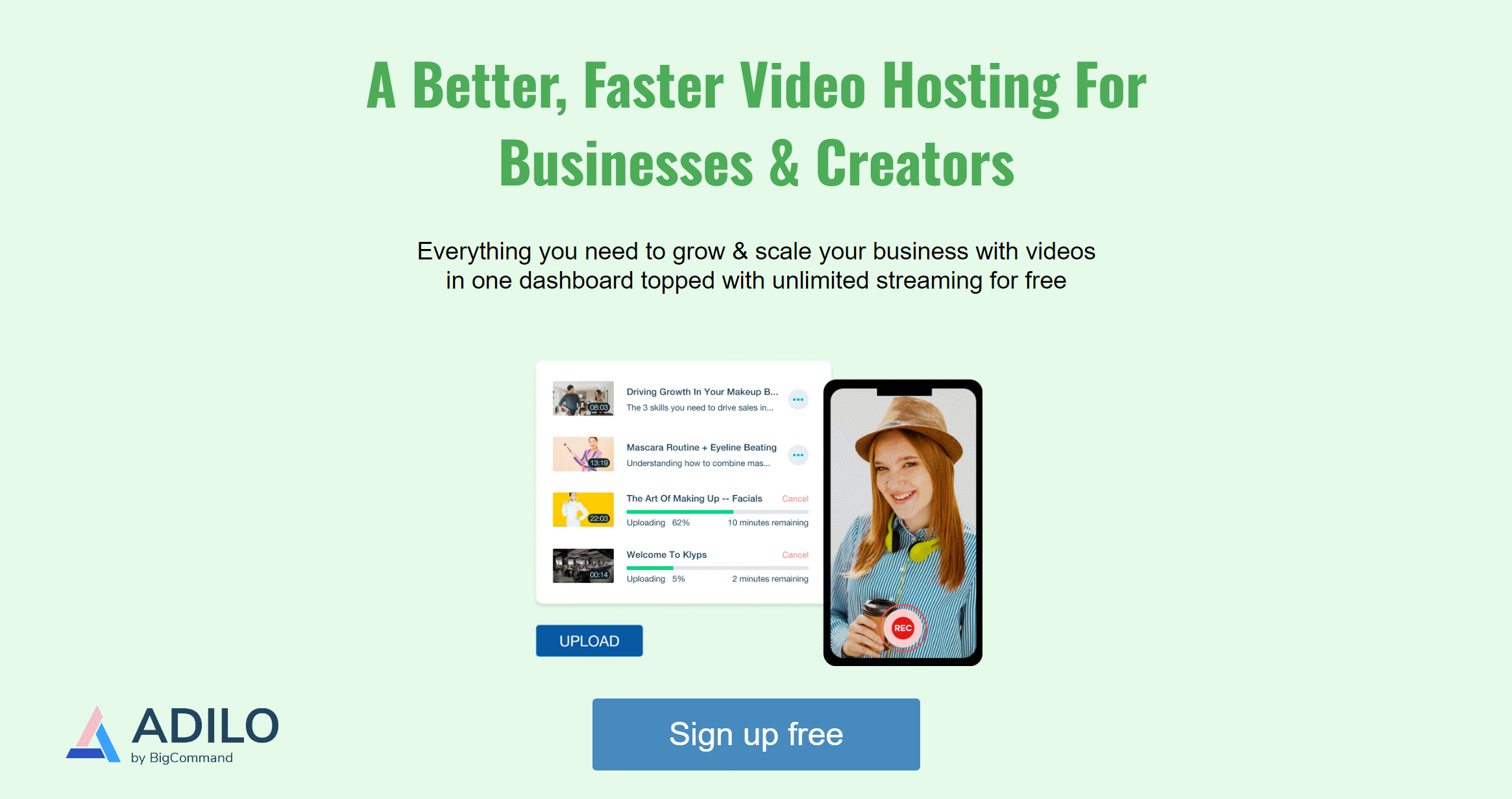Personal moment: Not too long ago, a friend in the startup space told Eric something that stuck with him: "Tool directories feel like cluttered flea markets nowadays." That nudge led him down a rabbit hole—one filled with late-night code sprints and more than a few coffee stains on the kitchen table. But out the other end, something noteworthy emerged—Findly.tools, a purposeful alternative for those tired of the noise, craving meaningful discovery and authentic creation.
From Coffee-Stained Brainstorms to Purpose-Driven Platform
The journey behind Findly.tools began not in a boardroom, but over a candid, coffee-fueled conversation between friends. Eric, the founder of both Findly.tools and Open-Launch.com (an open-source alternative to ProductHunt), was struck by a friend’s frustration with the overwhelming clutter and lack of transparency in existing tool directories like 1000.tools. This simple but honest complaint became the spark for something bigger—a platform that would put creators and users back in control.
From Frustration to Vision: The Birth of Findly.tools
Eric’s experience with open-source projects had already shaped his belief in transparency and user empowerment. But the idea for Findly.tools was different. It was about more than just listing tools; it was about rethinking the entire experience. As Eric puts it:
“I wanted to create a place where creators felt heard, not herded.”
With this vision, Findly.tools set out to address the pain points that plagued other platforms. The goal was clear: build a curated directory that was clean, minimal, and above all, user-focused.
Drawing Inspiration, Not Imitation
While platforms like ProductHunt offered inspiration, Eric wanted Findly.tools to go further. The focus was on giving users and tool creators more control, especially in areas like advertising and tool submission. Unlike closed systems, Findly.tools would offer self-service advertising—a feature designed to let creators promote their tools on their own terms, without hidden fees or opaque processes.
Building with Intention: Minimalism and User Control
Development of Findly.tools was intentionally slow and steady. Eric and his small team prioritized doing things right over doing things fast. This meant several rounds of interface redesigns, each one stripping away unnecessary clutter and focusing on what mattered most: discoverability, transparency, and ease of use.
Minimalist Interface: Every design choice was made to reduce noise and highlight the tools themselves.
Open-Source Alternatives: The platform’s DNA is rooted in open-source values, ensuring transparency in both code and community practices.
Self-Service Advertising: Tool creators can manage their own promotions, set budgets, and track performance—all without gatekeepers.
Overcoming Setbacks: Learning Through Iteration
The path was not without its challenges. Early versions of Findly.tools faced setbacks, from clunky navigation to the complexities of implementing truly transparent self-service advertising. Each obstacle, however, reinforced the commitment to user control and clarity. The result is a platform where creators can submit their tools, manage their listings, and engage with a community that values openness.
Findly.tools stands as a testament to the power of listening—both to users and to the lessons learned along the way. By focusing on minimalism, community, and user control, it is shaping a new standard for curated tool platforms.
Minimalism That Isn’t Boring: Findly’s Approach to UX
When it comes to showcasing curated tools for developers, creators, and entrepreneurs, Findly.tools sets itself apart with a minimalist tool showcase that’s anything but dull. The platform’s user interface is a masterclass in avoiding information overload—delivering a focused browsing experience where every element has a purpose and every tool gets its moment to shine.
Intentional Minimalism: Less Clutter, More Clarity
Findly’s design philosophy is rooted in the belief that minimalism should serve discovery, not stifle it. The interface is free from unnecessary popups, intrusive banners, and distracting sidebars. Instead, users are greeted with generous white space, clear typography, and obvious calls-to-action. This “less but better” approach means visitors can scan, search, and select tools without feeling overwhelmed.
“Designing Findly.tools felt like setting up an art gallery—make each piece shine.” – Eric
This analogy is more than just a design mantra. Every tool listed on Findly.tools is given a prominent showcase space, free from clutter and competing ads. The result is a platform that feels open and inviting, where curated tools for developers and creators are the main attraction.
Curation That Cuts Through the Noise
The heart of Findly’s minimalist approach is its rigorous curation process. The team weeds out fluff, ensuring only genuinely useful and innovative tools make the cut. This isn’t a dumping ground for every new app or service—instead, it’s a carefully maintained collection that saves users time and helps them discover resources that truly matter.
Fewer popups, more breathing space: Users can browse without constant interruptions.
Zero clutter: No unnecessary widgets or banners—just tools, clearly presented.
Obvious navigation: Simple menus and clear categories make discovery effortless.
Subtle Features, Big Impact
Minimalism at Findly.tools doesn’t mean missing out on essential features. The platform includes an easy tool submission process, with clear guidelines to help creators put their best foot forward. Submissions are reviewed for quality and relevance, maintaining the integrity of the showcase.
For tool creators, the self-service advertising feature is designed to empower rather than distract. Ads are integrated with transparency, giving creators control while keeping the user experience clean and focused. This balance ensures that the platform remains a trusted space for both discovery and promotion.
Minimalism as a Defining Trait
Findly.tools’ minimalist tool showcase is more than a visual style—it’s a commitment to transparency, efficiency, and genuine value. By stripping away the unnecessary, the platform creates deliberate space for creativity and innovation to stand out, making it a go-to destination for anyone seeking the best curated tools for developers and creators.
Self-Service, Not Salesy: Advertising and Empowerment for Tool Creators
Findly.tools is redefining how tool creators connect with their audience, placing a strong emphasis on self-service advertising and direct engagement. Unlike traditional platforms that rely on sales teams or opaque processes, Findly.tools hands the reins to creators, letting them submit your tool and manage its promotion without any middlemen or gatekeepers.
Direct Submission: No Middlemen, No Gatekeepers
At the heart of Findly.tools is a simple but powerful idea: creators should be able to share their work directly with the Findly user community. The Submit Your Tool feature is open to everyone—whether you’re an indie developer launching your first app or an established company rolling out a new product. This grassroots approach encourages authentic discovery and levels the playing field, ensuring that every tool, big or small, has a fair shot at being seen.
Self-Service Advertising: Full Control for Creators
Findly.tools stands out with its self-service advertising model. Tool creators can independently manage every aspect of their promotion, from setting the budget and choosing the timing to selecting ad placement. There’s no need to pitch to a sales team or wait for approval. Everything is handled through a straightforward dashboard, giving creators the flexibility to experiment and optimize their campaigns on their own terms.
Budget: Set your own spending limits and adjust as needed.
Timing: Launch campaigns when it matters most for your tool.
Placement: Choose where your tool appears within the platform.
This approach is rare among competitor platforms, where advertising often involves negotiations, hidden fees, or preferential treatment for bigger brands. On Findly.tools, every creator—regardless of size or experience—has access to the same transparent system.
Transparency and Trust: A Fair Model for All
Transparency is a core value at Findly.tools. Ad spots and pricing are visible to everyone, eliminating the confusion and suspicion that can come with “backroom deals.” The process is kept simple and above-board, fostering trust within the Findly user community and ensuring that creators know exactly what they’re getting.
“When creators advertise on Findly, they know exactly what they’re getting—no black boxes.” – Eric
This clarity not only empowers creators but also reassures users that the tools featured on the platform have earned their place through open, honest promotion. By supporting self-service advertising and a transparent submission process, Findly.tools is building a community where innovation is celebrated and everyone has a voice.
Ultimately, Findly.tools empowers its users by giving them the reins on how their creations are discovered and promoted—no third-party negotiations or hoops, just straightforward control and community-driven growth.
What Sets Findly Apart (And Why Creators Keep Coming Back)
In a crowded landscape of tool directories and resource hubs, Findly.tools stands out for more than just its curated listings. The platform is quickly earning a reputation among developers, creators, and entrepreneurs for its unique blend of minimalism, community-driven discovery, and genuine user empowerment. Here’s why the Findly user community is growing—and why creators keep returning to share their latest projects.
Active Community: Discovery, Sharing, and Real Feedback
At the heart of Findly is an active, engaged user community. Unlike many platforms where submissions disappear into a void, every tool added to Findly sparks conversation, feedback, and further discovery. Users don’t just browse—they participate, comment, and help shape the platform’s direction. This participatory model means every submission matters, fueling a constant feedback loop that benefits both tool creators and users seeking resources for entrepreneurs and developers alike.
More Than Just Another Directory: Minimalism Meets Transparency
Findly was inspired by platforms like ProductHunt and 1000.tools, but it carves its own path. Where ProductHunt is known for its open-source ethos and 1000.tools for its clean curation, Findly combines these strengths with a commitment to transparency and simplicity. The interface is intentionally minimal, keeping distractions at bay and letting the tools themselves shine. This approach not only makes navigation easy but also fosters a sense of trust and authenticity that is rare among Findly alternatives.
Fair Visibility and Community Engagement for Tool Creators
One of the most significant differences is how Findly treats tool creators. Instead of relying on paid placements or algorithmic favoritism, Findly gives every submission a fair shot at visibility. The platform’s self-service advertising model puts control back in the hands of users, not just sponsors. As a result, creators benefit from authentic community engagement, not just fleeting attention from a paid top spot. This fairness is a key reason why creators keep coming back to submit, update, and interact with the community.
Authenticity and a True Sense of Participation
Findly.tools is more than a showcase—it’s a collaborative space. Both creators and users are treated as participants, not products to be monetized. The platform’s open feedback channels and evolving feature set reflect a rare, feedback-driven approach. As one creator put it:
“There’s a real sense of craft here—each new submission feels like a collaborative win.”
This culture of authenticity and respect is what truly sets Findly apart. Contributors are valued, their voices heard, and their work celebrated. It’s a platform where every member of the Findly user community can see the impact of their participation, making Findly.tools a standout choice among resources for entrepreneurs and anyone seeking a fair, empowering alternative in the tool discovery space.
Wild Cards: If Findly.tools Were a Band, What Genre Would It Be?
If you had to imagine Findly.tools as a band, it wouldn’t be a stadium-filling pop act or a polished corporate ensemble. Instead, Findly.tools would be the indie band playing at your favorite local venue—where the crowd is close, the energy is real, and every member gets a chance to solo. In the world of tool development platforms, where mainstream sites often feel like big, impersonal arenas, Findly.tools stands out as the cozy, authentic space where innovation happens “off-Broadway.”
At its core, Findly.tools is a grassroots project born from a simple conversation and a desire to do things differently. Founder Eric, who also created Open-Launch.com, an open-source alternative to ProductHunt, set out to build a platform that puts creators and users first. The result is a tool development platform that feels more like a jam session than a storefront. Here, every tool is an instrument, and every creator is invited to join the band. There’s no gatekeeping, no corporate suits—just builders and dreamers riffing together, each adding their unique sound to the mix.
This community-driven approach is what truly sets Findly.tools apart. Instead of focusing solely on curation or flashy promotion, the platform emphasizes minimalism, transparency, and user control. Tool creators can showcase their work, participate in self-service advertising, and connect directly with their audience. It’s a fresh approach to community and participation that echoes the ethos of open-source alternatives—where collaboration and shared ownership matter more than top-down direction.
As one user put it,
“Findly’s vibe is more open mic than talent show—everyone gets a turn.”
This sentiment captures the essence of Findly.tools. The platform isn’t about competition or chasing the next big thing; it’s about providing a space where anyone with an idea can step up, plug in, and play their part. In a sea of similar platforms, this wild card spirit is what gives Findly.tools its unique flavor. It’s not just a directory or a marketplace—it’s a living, breathing community where innovation is celebrated, and every voice matters.
If mainstream tool development platforms are the big, glossy arenas, Findly.tools is the intimate venue where the next wave of creators gather. It’s where you discover hidden gems, connect with like-minded builders, and shape the future of digital tools together. In this jam session of builders, every contribution counts, and the music is always evolving.
So, if you’re looking for a tool platform that feels less like a corporate showcase and more like a collaborative band, Findly.tools is your stage. Here, the spotlight is shared, the crowd is supportive, and the next great idea might just come from the person sitting next to you. That’s the wild card energy driving the next wave of tool development platforms—and it’s what makes Findly.tools truly sing.



